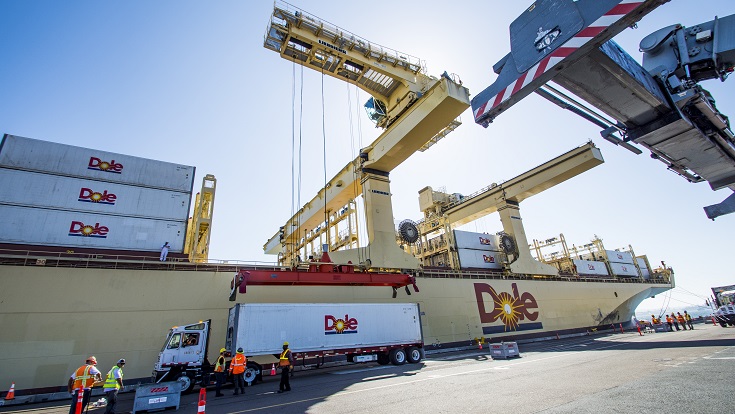Every week, ships filled with cargo from refrigerated bananas to large scale machinery components arrive at the Port of San Diego. From the dock, the imported goods are then loaded onto trucks or trains headed to stores, shipyards or manufacturing plants.
Today, dock workers rely primarily on fossil-fueled equipment to move cargo. Imagine a future where zero-emissions forklifts and electric trucks are used instead. Surrounding neighborhoods would enjoy cleaner air and less noise from these crucial industries that support thousands of jobs.
At SDG&E, we are partnering with the Port of San Diego and its tenants to make this vision a reality with a proposal to electrify medium- and heavy-duty vehicles and forklifts.
If our proposal is approved by the California Public Utilities Commission (CPUC), SDG&E will install approximately 30 charging stations, along with other equipment, at Port facilities to support the switch to electric freight-handling equipment.
Our proposal builds on an existing initiative between SDG&E and the San Diego Port Tenants Association to bring electric equipment to the Port. Last year, we worked with the Port Tenants Association to secure a $5.9 million grant from the California Energy Commission to fund the development of 10 all-electric freight vehicles outfitted with zero-emissions technology. Early results of this effort are promising, according to a recent article in Inside Climate News. The article highlighted the use of a brand new electric semi-truck and a forklift large enough to move shipping containers at Terminalift operations at the Port of San Diego.
Technology to make saving energy easier
As part of our proposal, SDG&E will install data loggers to determine how efficiently electric trucks and forklifts can integrate into the grid without overloading it, and how these business customers can save money by charging during grid-friendly times when costs are lower. With the influx of electric vehicles forecasted to come onto the grid in the coming years in industrial, commercial and residential settings, such monitoring equipment will gather vital data to help better manage energy consumption and help avoid costly infrastructure to absorb additional electrical load.
Today’s automation technology is not robust enough to allow medium- and heavy-duty chargers to automatically charge during grid-friendly hours. This pilot will provide crucial baseline data for companies to test their equipment against, until more advanced automation technology becomes available. One company already working with the Port and SDG&E is Escondido-based TransPower, a local builder of electric semi-trucks and other heavy-duty equipment.
The port project, if implemented, would help reduce carbon emissions in our region by an estimated 4,100 metric tons, equivalent to the benefit of planting of 100,000 tree seedlings and growing them for ten years to absorb carbon.
This article is part of a series taking a closer look at seven projects proposed by SDG&E to increase access to electric vehicle charging infrastructure as we work to clean the air for a healthier tomorrow. Learn more about our plans to electrify transportation and clean our air, here.


